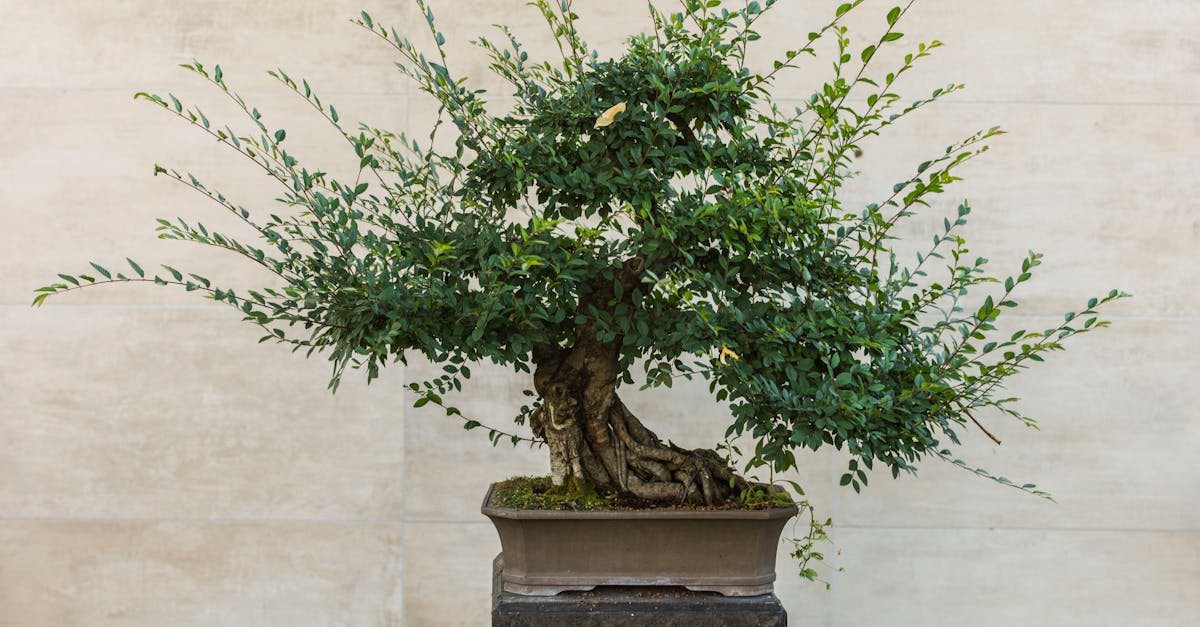From Polish Roots to Global Recognition: Wlodzimierz Pietraszko’s Bonsai Legacy
Wlodzimierz Pietraszko, born in Poland in 1951, is an acclaimed bonsai artist recognized globally for his creations. His journey into the art form began in the early 1970s when he encountered a Japanese bonsai exhibition, captivating him with its beauty and artistry. Pietraszko delved deeper, studying the techniques of Japanese masters like Masahiko Kimura and Yuji Yoshimura, while also drawing inspiration from Chinese artists, shaping his unique style characterized by simplicity and elegance.
Over the years, Pietraszko’s bonsai trees have garnered international acclaim, winning prestigious awards including the World Bonsai Convention Award in 2013, a testament to his exceptional talent. His creations have graced exhibitions worldwide, including the renowned National Bonsai & Penjing Museum in Washington, D.C., showcasing his artistry to a global audience.
Pietraszko’s bonsai are characterized by their small size and shallow pots, allowing the natural beauty of the trees and their roots to take center stage. His work captures the essence of miniature landscapes, combining the art of tree cultivation with the beauty of nature. His dedication to promoting bonsai in Poland and worldwide has seen him actively involved in teaching workshops and demonstrations, sharing his knowledge and inspiring a new generation of bonsai enthusiasts.
1. Early Life and Influences
Wlodzimierz Pietraszko’s journey into the world of bonsai began in Poland in 1951, where he was born and raised. His first encounter with the art form came in the early 1970s when he visited a Japanese bonsai exhibition. Captivated by the beauty and artistry of the miniature trees, Pietraszko felt an instant connection and decided to delve deeper into this ancient art form.
Pietraszko eagerly sought knowledge and inspiration from the masters of the craft, studying the techniques and styles of renowned Japanese bonsai artists such as Masahiko Kimura and Yuji Yoshimura. He also drew inspiration from the works of Chinese bonsai masters, notably Wang Bing Nan and Chen Wenliang, broadening his understanding of the art form’s diverse traditions.
As Pietraszko immersed himself in the study of bonsai, he developed a deep appreciation for the harmony between nature and artistic expression. Inspired by the Japanese concept of ‘wabi-sabi,’ which celebrates the beauty of imperfection and the passage of time, Pietraszko’s early work showcased his ability to capture the essence of nature in his miniature creations.
Pietraszko’s early influences
Wlodzimierz Pietraszko’s early influences in the art of bonsai were deeply rooted in the traditions of Japan and China. He studied the works of renowned Japanese bonsai masters such as Masahiko Kimura and Yuji Yoshimura, learning from their techniques and philosophies. Kimura, known for his innovative approach to bonsai, emphasized the importance of capturing the tree’s natural form and respecting its inherent beauty. Yoshimura, a master of traditional Japanese bonsai styles, stressed the significance of balance, harmony, and proportion in creating a bonsai.
Pietraszko also drew inspiration from the Chinese bonsai tradition, studying the works of masters like Wang Bing Nan and Chen Wenliang. Wang, a pioneer of literati-style bonsai, emphasized the expression of the artist’s inner world through the bonsai, often using scholar stones and other elements to create miniature landscapes. Chen, a master of the嶺南嶺南嶺南岭南岭南岭南岭南岭南嶺南岭南嶺南嶺南嶺南岭南嶺南嶺南嶺南嶺南岭南岭南嶺南嶺南嶺南嶺南嶺南岭南嶺南嶺南岭南嶺南岭南岭南嶺南嶺南嶺南岭南嶺南嶺南嶺南嶺南嶺南岭南嶺南嶺南嶺南嶺南嶺南嶺南岭南嶺南嶺南嶺南嶺南岭南嶺南 style, focused on creating dynamic and naturalistic bonsai with exposed roots and dramatic trunk lines.
Pietraszko’s early influences laid the foundation for his own unique style, which combines elements of both Japanese and Chinese traditions. He skillfully blends the natural beauty of the tree with the artist’s interpretation, creating bonsai that are both aesthetically pleasing and deeply rooted in the history of the art form.
Pietraszko’s early work
In the early stages of his bonsai journey, Wlodzimierz Pietraszko found inspiration in the traditional Japanese bonsai style. This style emphasizes the natural beauty of the tree, with a focus on balance, harmony, and proportion. Pietraszko meticulously studied the techniques and principles of Japanese bonsai, honing his skills and developing a deep understanding of the art form.
However, as Pietraszko continued to explore his creativity, he gradually began to move away from the traditional Japanese style, seeking to develop his own unique approach. He believed that bonsai should not merely imitate nature, but should also express the artist’s personal interpretation and vision. Pietraszko’s early work showcased his growing confidence in experimenting with different forms and compositions, pushing the boundaries of the art form.
Over time, Pietraszko’s unique style emerged, characterized by its simplicity and elegance. He favored small trees and plants, allowing him to create miniature landscapes that captured the essence of nature in a condensed form. Pietraszko’s bonsai often featured clean lines, understated forms, and a subtle balance between positive and negative space. He also experimented with shallow pots, which helped to emphasize the natural beauty of the trees and their roots.
2. International Recognition
Wlodzimierz Pietraszko’s exceptional talent and dedication have earned him international recognition in the bonsai community. His bonsai creations have garnered numerous prestigious awards, including the coveted World Bonsai Convention Award in 2013. This award is a testament to Pietraszko’s mastery of the art form and his ability to create bonsai trees of exceptional beauty and artistry.
Pietraszko’s work has graced exhibitions around the world, captivating audiences with its simplicity, elegance, and profound connection to nature. His bonsai trees have been featured in renowned institutions such as the National Bonsai & Penjing Museum in Washington, D.C., and the Royal Botanic Gardens, Kew in London. These exhibitions have provided a platform for Pietraszko to share his passion for bonsai with a global audience and inspire a new generation of bonsai enthusiasts.
The international recognition that Pietraszko has received is a reflection of his unwavering commitment to the art form and his ability to transcend cultural and geographical boundaries through his bonsai creations. His work continues to captivate and inspire bonsai enthusiasts worldwide, solidifying his position as one of the most respected and influential bonsai artists of our time.
Pietraszko’s awards and honors
Wlodzimierz Pietraszko’s exceptional bonsai creations have been recognized with numerous prestigious awards, both nationally and internationally. Among his most notable accolades is the World Bonsai Convention Award, which he received in 2013. This award is widely considered the highest honor in the bonsai world, and it is a testament to Pietraszko’s exceptional skill and artistry.
In recognition of his significant contributions to Polish culture and the art of bonsai, Pietraszko has also been honored by the Polish government with the Medal of Merit for Culture. This award is a prestigious recognition bestowed upon individuals who have made outstanding achievements in the fields of art, culture, and science. Pietraszko’s receipt of this award highlights the profound impact that his work has had on Polish culture and his role as an ambassador for the art of bonsai.
Pietraszko’s awards and honors are a testament to his dedication to the art of bonsai and his ability to create bonsai trees of exceptional beauty and artistry. His achievements have brought recognition to both himself and the art of bonsai, inspiring a new generation of bonsai enthusiasts and contributing to the growing popularity of bonsai worldwide.
Pietraszko’s exhibitions
Wlodzimierz Pietraszko’s bonsai creations have graced exhibitions around the world, captivating audiences with their beauty, simplicity, and profound connection to nature. Notable among these exhibitions are the National Bonsai & Penjing Museum in Washington, D.C., and the Royal Botanic Gardens, Kew in London. These prestigious institutions are renowned for their collections of bonsai and penjing trees, and Pietraszko’s work has been honored to be featured alongside other masterpieces of the art form.
Pietraszko’s exhibitions have provided a platform for him to share his passion for bonsai with a global audience. Through these exhibitions, he has inspired a new generation of bonsai enthusiasts and contributed to the growing popularity of bonsai worldwide. Visitors to these exhibitions have had the opportunity to witness firsthand the exquisite beauty and artistry of Pietraszko’s bonsai trees, and to appreciate the deep understanding of nature that informs his work.
Pietraszko’s exhibitions have not only showcased his own work but have also helped to raise the profile of bonsai as an art form. By bringing bonsai to a wider audience, Pietraszko has played a significant role in promoting the appreciation and understanding of this ancient art form.
3. Pietraszko’s Artistic Style
Wlodzimierz Pietraszko’s artistic style is characterized by its simplicity and elegance. He favors small trees and plants, which he trains and shapes to create miniature landscapes that capture the essence of nature in a condensed form. Pietraszko’s bonsai often feature clean lines, understated forms, and a subtle balance between positive and negative space.
One of the defining features of Pietraszko’s bonsai is his use of shallow pots. This technique helps to emphasize the natural beauty of the trees and their roots, and it also creates a sense of harmony and balance in the composition. Pietraszko’s shallow pots allow the viewer to appreciate the tree’s entire form, from the delicate branches to the intricate root structure.
Pietraszko’s artistic style is influenced by both Japanese and Chinese bonsai traditions. However, he has developed his own unique approach, which is characterized by its simplicity, elegance, and profound connection to nature. Pietraszko’s bonsai are not merely imitations of nature, but rather expressions of his own personal interpretation and vision.
Pietraszko’s use of small trees and plants
Wlodzimierz Pietraszko’s use of small trees and plants in his bonsai creations is a defining characteristic of his artistic style. By working with small specimens, Pietraszko is able to create miniature landscapes that are both beautiful and realistic. These miniature landscapes capture the essence of nature in a condensed form, allowing viewers to appreciate the beauty and complexity of the natural world on a smaller scale.
One of the advantages of using small trees and plants is that it allows Pietraszko to create bonsai that are suitable for indoor display. These smaller bonsai can be easily incorporated into a home or office environment, bringing a touch of nature indoors. Pietraszko’s miniature landscapes can also be used to create unique and eye-catching centerpieces for special occasions or events.
Furthermore, working with small trees and plants requires a high level of skill and precision. Pietraszko’s ability to train and shape these small specimens into beautiful and realistic bonsai demonstrates his deep understanding of the art form and his mastery of the techniques involved.
Pietraszko’s use of shallow pots
Wlodzimierz Pietraszko’s use of shallow pots for his bonsai trees is a deliberate choice that serves several aesthetic and practical purposes. Shallow pots help to emphasize the natural beauty of the trees, allowing the viewer to appreciate the entire composition, from the delicate branches to the intricate root structure.
By placing the bonsai in a shallow pot, Pietraszko creates a sense of balance and harmony in the overall presentation. The shallow pot allows the tree to spread its roots more naturally, giving the illusion that the tree is growing in its natural environment. This technique also helps to create a more realistic and organic look for the bonsai.
Furthermore, shallow pots allow for better water and nutrient management. The roots of the tree are more exposed to air and light, which promotes healthy root growth and development. Additionally, shallow pots make it easier to observe the tree’s roots and to monitor its overall health.
4. Pietraszko’s Legacy
Wlodzimierz Pietraszko’s legacy as a master bonsai artist is secure, with his contributions to the art form having left a lasting impact on the bonsai community in Poland and around the world. Pietraszko’s unique style, characterized by its simplicity, elegance, and profound connection to nature, has inspired a new generation of bonsai enthusiasts and helped to raise the profile of bonsai as an art form.
As a founding member of the Polish Bonsai Association, Pietraszko has played a pivotal role in promoting the art of bonsai in his home country. His dedication to teaching and sharing his knowledge has helped to foster a thriving bonsai community in Poland and has contributed to the growing popularity of bonsai as an art form. Pietraszko’s workshops and demonstrations around the world have further spread his influence, inspiring bonsai artists and enthusiasts alike.
Pietraszko’s legacy extends beyond his own artistic creations. Through his teaching and mentorship, he has passed on his skills and knowledge to countless students, many of whom have gone on to become accomplished bonsai artists in their own right. Pietraszko’s passion for bonsai and his commitment to sharing his knowledge have ensured that his legacy will continue to inspire and influence bonsai artists for generations to come.
Pietraszko’s contributions to the art of bonsai
Wlodzimierz Pietraszko’s contributions to the art of bonsai are multifaceted and far-reaching. His dedication to promoting bonsai in Poland and around the world, combined with his exceptional artistic talent, have left a lasting impact on the bonsai community.
One of Pietraszko’s most significant contributions is his role in popularizing bonsai in Poland. As a founding member of the Polish Bonsai Association, he has played a pivotal role in fostering a thriving bonsai community in his home country. Through his teaching, workshops, and demonstrations, Pietraszko has introduced countless Poles to the art of bonsai and has inspired a new generation of bonsai enthusiasts.
Beyond Poland, Pietraszko’s influence has extended to the global bonsai community. His unique artistic style, characterized by its simplicity, elegance, and profound connection to nature, has garnered international recognition and has inspired bonsai artists worldwide. Pietraszko’s bonsai creations have been featured in prestigious exhibitions around the world, and his work has been recognized with numerous awards, including the coveted World Bonsai Convention Award.
Pietraszko’s teaching and workshops
Wlodzimierz Pietraszko’s passion for bonsai extends beyond his own artistic creations. He is also a dedicated teacher and mentor, generously sharing his knowledge and expertise with others. Pietraszko has conducted numerous workshops and demonstrations around the world, inspiring bonsai enthusiasts and artists alike.
Pietraszko’s teaching approach is characterized by patience, clarity, and a deep understanding of the art form. He believes that bonsai is a journey of continuous learning and self-improvement, and he encourages his students to develop their own unique styles and interpretations. Pietraszko’s workshops often focus on the fundamental principles of bonsai, such as tree selection, pruning, and shaping techniques. He also emphasizes the importance of observing nature and finding inspiration in the natural world.
Pietraszko’s generosity as a teacher is evident in his willingness to share his knowledge and techniques with others. He is always available to answer questions and provide guidance to his students, and he often goes above and beyond to help them succeed. Pietraszko’s dedication to teaching has not only fostered a new generation of bonsai artists but has also contributed to the growing popularity of bonsai as an art form.
5. Conclusion
Wlodzimierz Pietraszko’s journey in the art of bonsai has been marked by remarkable achievements and an unwavering dedication to promoting the art form. His bonsai creations, characterized by their simplicity, elegance, and profound connection to nature, have garnered international acclaim and have been featured in prestigious exhibitions worldwide. Pietraszko’s influence extends beyond his own artistic creations, as he is also a dedicated teacher and mentor, generously sharing his knowledge and expertise with others.
As a founding member of the Polish Bonsai Association, Pietraszko has played a pivotal role in fostering a thriving bonsai community in his home country. His workshops and demonstrations around the world have further spread his influence, inspiring bonsai artists and enthusiasts alike. Pietraszko’s commitment to teaching and sharing his passion for bonsai has ensured that his legacy will continue to inspire and influence generations of bonsai artists to come.
Wlodzimierz Pietraszko’s exceptional talent, dedication, and contributions to the art of bonsai have earned him recognition as a master bonsai artist. His work has not only enriched the bonsai community but has also brought the beauty and tranquility of bonsai to a wider audience. Pietraszko’s legacy as a bonsai artist and educator will undoubtedly continue to inspire and captivate bonsai enthusiasts for years to come.
What is the significance of Wlodzimierz Pietraszko’s use of small trees and plants in his bonsai creations?
Pietraszko’s use of small trees and plants allows him to create miniature landscapes that capture the essence of nature in a condensed form. These small bonsai are suitable for indoor display and can bring a touch of nature into any space. Additionally, working with small trees and plants requires a high level of skill and precision, demonstrating Pietraszko’s mastery of the art form.
How does Pietraszko’s use of shallow pots enhance his bonsai creations?
Pietraszko’s use of shallow pots helps to emphasize the natural beauty of his bonsai trees and allows the viewer to appreciate the entire composition, including the intricate root structure. Shallow pots also promote healthy root growth and development and make it easier to observe the tree’s roots and monitor its overall health.
What are some of the key characteristics of Pietraszko’s artistic style?
Pietraszko’s artistic style is characterized by its simplicity, elegance, and profound connection to nature. He favors clean lines, understated forms, and a subtle balance between positive and negative space. Pietraszko’s bonsai often feature small trees and plants, and he frequently uses shallow pots to emphasize their natural beauty and root structure.
How has Pietraszko contributed to the promotion of bonsai in Poland and worldwide?
As a founding member of the Polish Bonsai Association, Pietraszko has played a pivotal role in promoting the art of bonsai in his home country. He has conducted numerous workshops and demonstrations, both in Poland and around the world, inspiring a new generation of bonsai enthusiasts. Pietraszko’s exceptional artistic talent and dedication to teaching have helped to raise the profile of bonsai as an art form.
What advice would Pietraszko give to aspiring bonsai artists?
Pietraszko emphasizes the importance of patience, observation, and a deep understanding of nature in the art of bonsai. He encourages aspiring bonsai artists to study the techniques and principles of bonsai, but also to develop their own unique styles and interpretations. Pietraszko believes that bonsai is a journey of continuous learning and self-improvement, and he encourages his students to embrace the process and enjoy the beauty of nature.





